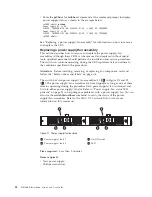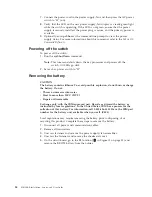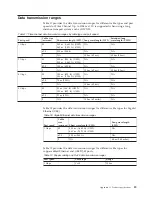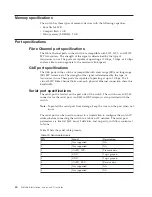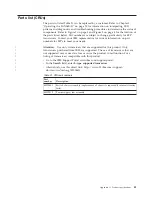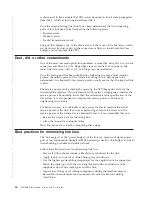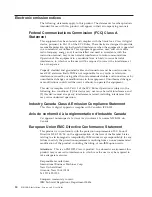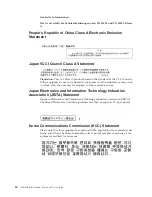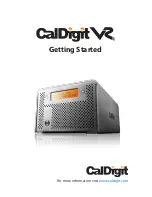
is discovered in this example that CRC errors observed in link 4 were propagated
from link 3, which in turn originated from link 2.
Once the original failing link (link 2) has been determined, the two connecting
ports of that link need to be checked for the following errors:
v
Encoder errors
v
Disparity errors
v
Invalid transmission words
The port that displays any of the above errors is the cause of the link issue, which
can be caused by dust or dirt in the connectors or fiber, an insufficient link loss
budget, and/or incompatible SFPs.
Dust, dirt, or other contaminants
One of the most common optical link problems is caused by dust, dirt, or oil in the
connectors and fiber. 8 and 16 Gbps links are more prone to such issues while
lower link data rates, such as 1, 2, or 4 Gbps may be unaffected.
Once the failing port has been identified by following the above fault isolation
process, the receive power of the transceiver sitting in that port needs to be
determined. An abnormally low receive power usually means that the physical link
is dirty.
The receive power can be checked by querying the SFP diagnostics data via the
command line interface. This information will provide a rough gauge whether the
receive power is abnormally lower than the minimum receive specification of the
transceiver. It is also prudent to compare this receive power with those of
neighboring transceivers.
For better accuracy, it is advisable to use a power meter to measure the actual
receive power of the link. If you are experiencing excessive bit errors and the
receive power of the transceiver is abnormally low, it is recommended that you:
v
Re-seat the transceivers for the failing link
v
Clean the connector and optical fiber
Most link issues are solved by completing these steps.
Best practices for minimizing link loss
The "link margin" or the "power budget" of the link is a measure of signal power
gain or loss expressed in decibels (dB). Maintaining a healthy link budget is critical
to establishing a reliable and stable network.
Follow these best practices for minimizing link loss:
v
Stay well within the maximum cable distance calculated for the link.
v
Apply typical or worst-case values during loss calculations.
v
Use the highest grade cabling components for the application to be supported.
v
Match the cable type with the wavelength, bandwidth, and distance to be
supported; do not mix cable types within a link.
v
Inspect loss ratings of all cabling components during the selection process.
v
Record loss measurements for horizontal and vertical cable runs during
installation.
44
SAN06B-R Installation, Service, and User Guide
|
|
|
|
|
|
|
|
|
|
|
|
|
|
|
|
|
|
|
|
|
|
|
|
|
|
|
|
|
|
|
|
|
|
|
|
|
|
|
|
|
|
|
|
Summary of Contents for SAN06B-R
Page 2: ......
Page 8: ...vi SAN06B R Installation Service and User Guide...
Page 12: ...x SAN06B R Installation Service and User Guide...
Page 14: ...xii SAN06B R Installation Service and User Guide...
Page 24: ...xxii SAN06B R Installation Service and User Guide...
Page 32: ...6 SAN06B R Installation Service and User Guide...
Page 62: ...36 SAN06B R Installation Service and User Guide...
Page 68: ...42 SAN06B R Installation Service and User Guide...
Page 80: ...54 SAN06B R Installation Service and User Guide...
Page 83: ......
Page 84: ...Part Number 98Y5370 Printed in USA GC27 2270 02 1P P N 98Y5370...



